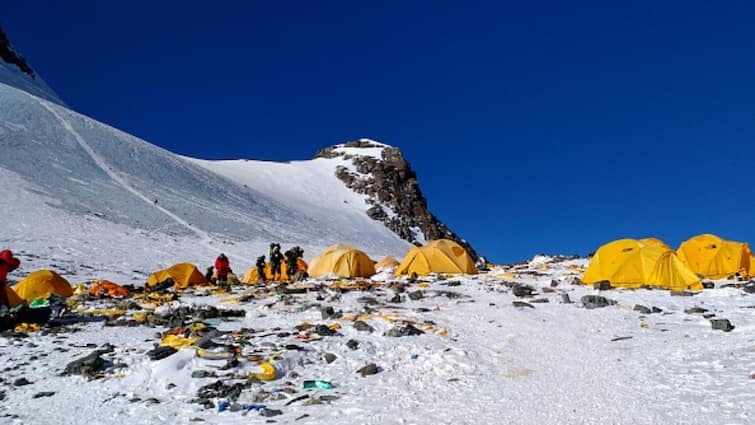Nearly 1,000 trekkers were stranded on the eastern slopes of Mount Everest in Tibet on Sunday after a powerful blizzard swept through the region, blocking key access routes. According to Chinese state media, the heavy snowfall, which is unusual for this time of year, has left several campsites isolated at altitudes exceeding 4,900 metres (16,000 feet).
Hundreds of villagers and emergency teams have been dispatched to clear thick layers of snow and reopen routes leading to the affected areas, Chinese outlet Jimu News reported. Authorities have confirmed that dozens of stranded tourists have already been escorted down the mountain to safety.
350 Rescued As Ops Intensifies
The severe blizzard began late Friday and continued through Saturday, according to local officials in Tingri County. The storm prompted the suspension of ticket sales and entry to the Everest Scenic Area over the weekend. As weather conditions worsened, communication with many trekkers was temporarily disrupted.
By Sunday evening, at least 350 trekkers had safely reached the township of Qudang, while contact had been re-established with another 200-plus individuals still in the mountains, Reuters reported, citing Chinese state media. Visuals from the region showed adventurers trudging through knee-deep snow under grey skies as strong winds whipped across the Himalayan slopes.
“It was so wet and cold in the mountains, and hypothermia was a real risk,” one trekker, who managed to reach Qudang, told Reuters. “The weather this year is not normal. My guide said he has never seen such extreme conditions in October,” he added. “Back in the village, we had a meal and were finally warm.”
The remaining stranded tourists are being brought down in groups under the supervision of coordinated rescue teams deployed by local authorities. The high-altitude valley, situated around 4,200 metres (13,800 feet), is a popular route among climbers and trekkers exploring the Everest region from Tibet’s side.
Blizzard Adds Pressure As Region Battles Extreme Weather
The unusually heavy snowfall marked one of the region’s fiercest October storms in recent years. State broadcaster CCTV did not specify whether local guides and support staff accompanying the trekking groups had been accounted for. It also remained unclear if climbers stationed near the north face of Everest, which also lies in Tibet, were affected.
Meanwhile, across the border in Nepal, heavy rains and flash floods triggered by the same weather system have claimed the lives of 47 people since Friday, highlighting the broader Himalayan region’s vulnerability to sudden, extreme weather events.
As clearing operations continue, authorities have urged trekkers and visitors to remain cautious and avoid venturing into high-altitude areas until conditions improve.



